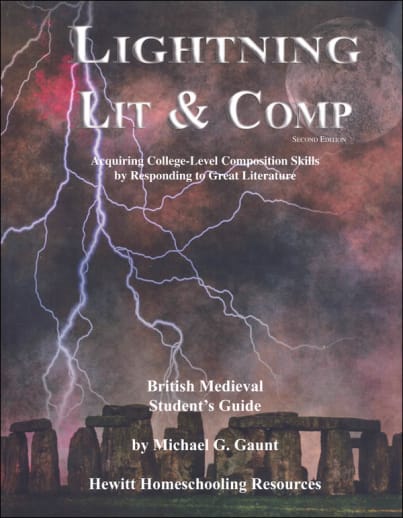Students read in the following order:
- Beowulf(epic poem; anonymous author)
- Anglo-Saxon riddles (text is in this Guide)
- Piers the Ploughman(epic poem; possibly by William Landland)
- York Mystery Play Cycle 42, The Ascension (play; anonymous author; text is in this Guide)
- Sir Gawain and the Green Knight(epic poem; anonymous author)
- Selection fromThe Gest of Robyn Hode(epic poem; anonymous author; (text is in this Guide)
- "St. Thomas Becket" fromThe Golden Legend(biography; anonymous author; (text is in this Guide)
- Selections fromThe Canterbury Tales(tales by Geoffrey Chaucer)
Lessons include story telling, imagery, symbolism, characterization, persuasive writing, drama, and description. For example,Beowulf is used to teach foreshadowing,Piers the Ploughmanteaches allegory, andSir Gawain and the Green Knightteaches tone. This course makes an excellent companion for studying Medieval History.
The Student's Guide includes comprehension questions, writing exercises, discussion questions, an additional reading list, semester and full-year schedules, and a bibliography. Answers to the comprehension questions are in the Teacher's Guide.
Recommendations: Generally speaking, this course is more difficult than all the other Lightning Literature courses except the Shakespeare courses. Much depends on student interest in the material, however. This course is especially recommended for students who have completed at least two previous high-school level Lightning Literature courses, who are studying medieval history, and who are interested in medieval literature. These should not be viewed as restrictions; this course can profitably be used by high-school students of any grade regardless of which previous Lightning Literature courses they have completed.

